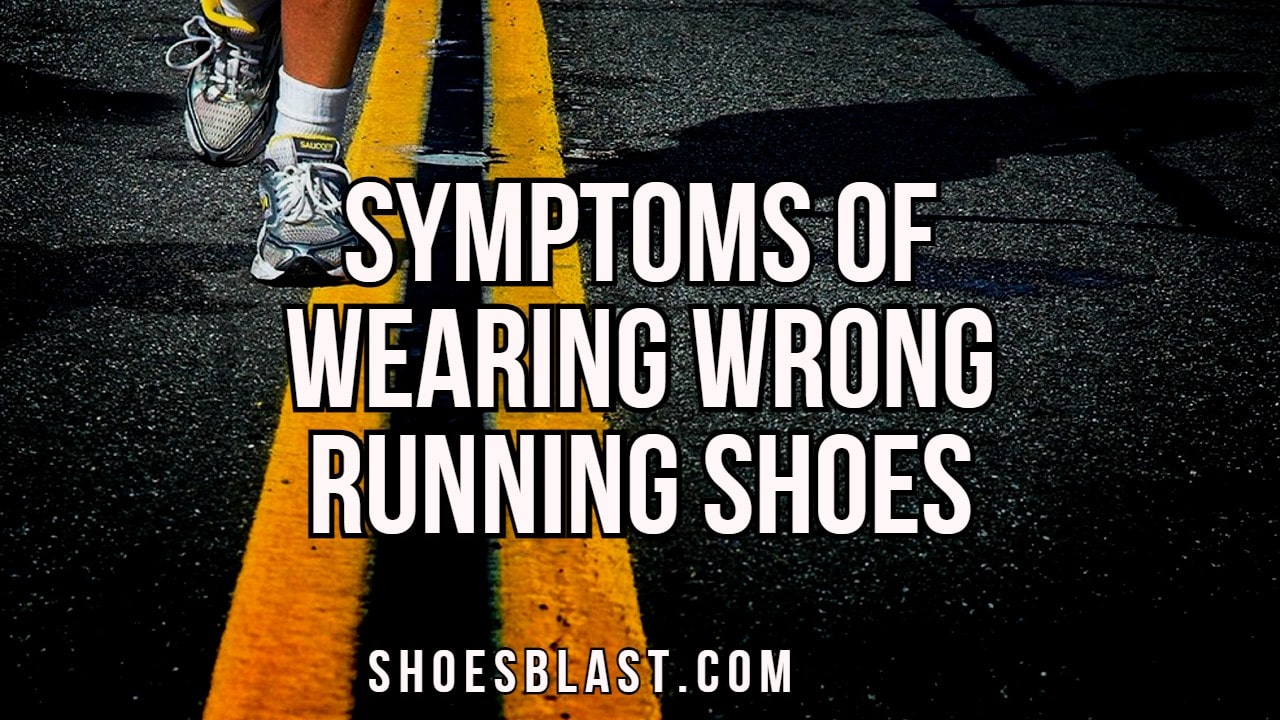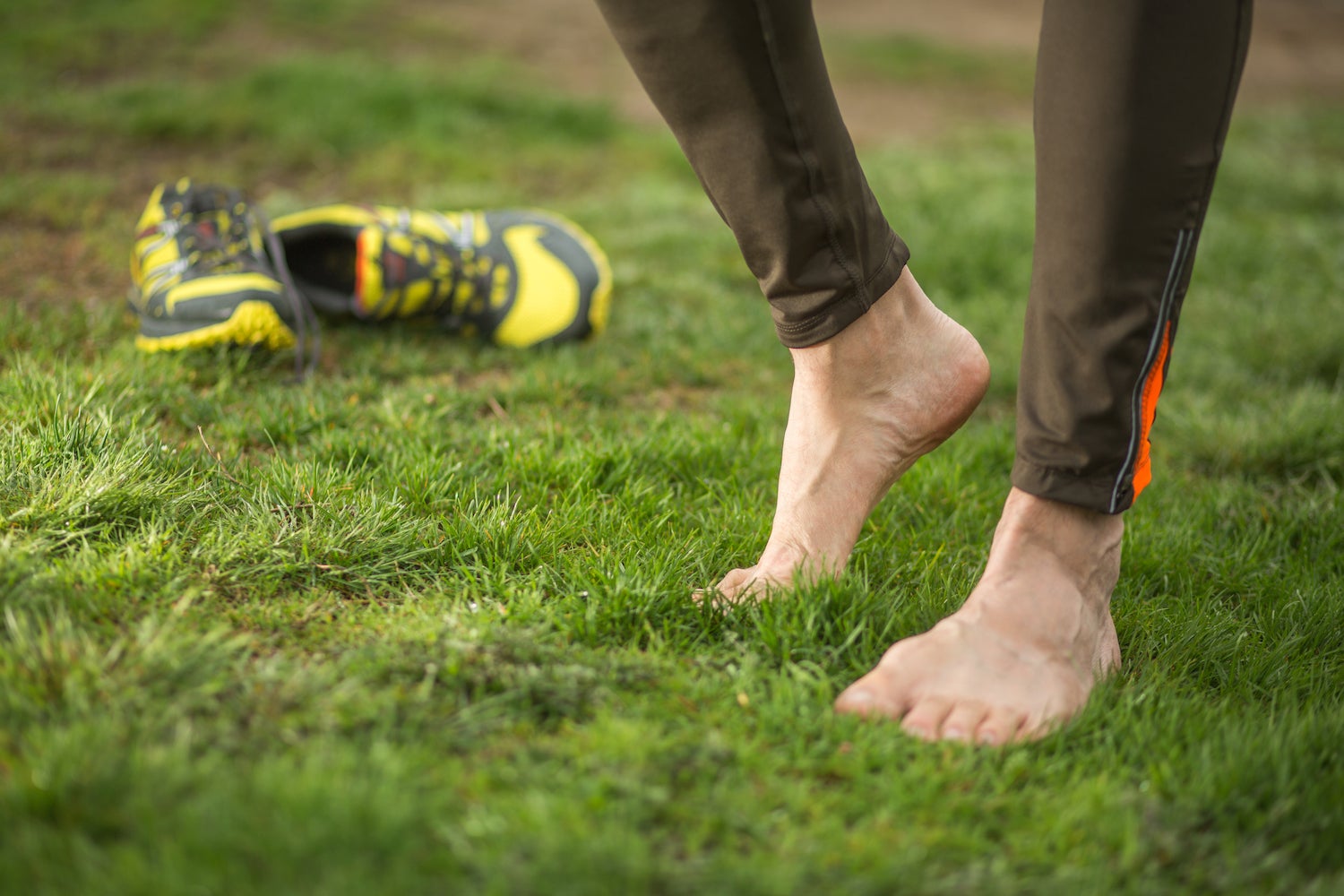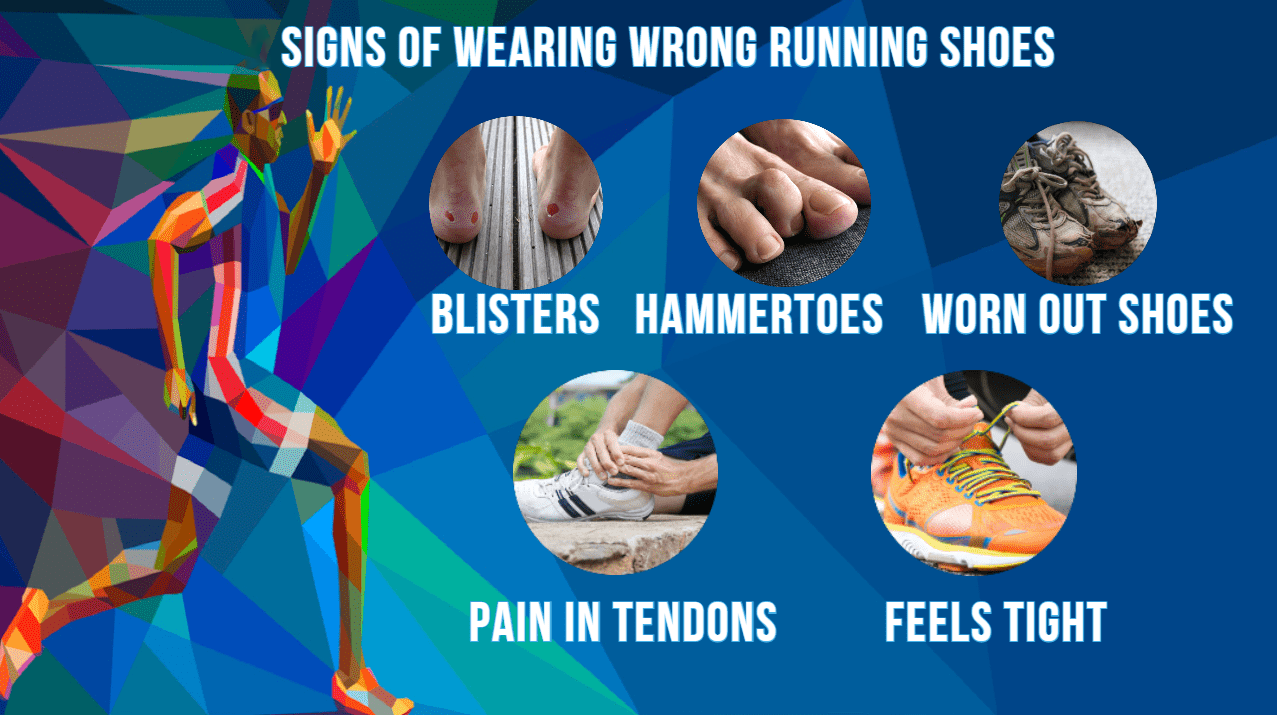Table of Contents
Imagine you’re in the middle of the running track forcing yourself to run faster. But you can’t! because of the continuous discomfort in the shoes. You’ve been running with your favorite pairs for about 6 months. Now, you’re no more enjoying your run because of the frequent pains in your foot.
It might be a symptom that you require a new pair. A harsh reality, but never fall in love with your running shoes for longer than 500 miles. Or, if you’ve bought a new pair of shoes, look for some symptoms that might tell you whether it is the perfect fit for your feet or not. Make sure to break in shoes before diving into the track.
Let’s dig into some warning signs that might be a wake-up call for you to change your wrong running shoes. Further, we’ll also look at some consequences of wearing large-sized or small-sized running shoes.
How Wearing Wrong Shoes Impact Your Running?
Whether you’re wearing worn-out running shoes or perhaps, tighter ones, your running will come to a bad end. And by the time you’ve run 400m, your feet, ankles, and knees will already start hurting. Wrong running shoes shift your body weight to your feet and then to your ankles, heels, and toes, causing you to slow down on the track.
Furthermore, if you’re a flat-footed runner, you’ll see that your foot arch touches the ground, resulting in rolling your foot and ankle inwards while running. This condition is also called over-pronation. And to top it off, wearing shoes with lousy arch support might increase your chances to form bunions and calluses.
If you need to improve your athletic performance or enjoy comfortable and lighter running, you must invest in the right running shoe. Wearing running shoes that perfectly fit your foot improves your running stride and prevents burnout.
10 Symptoms of Wearing Wrong Running Shoes
1. Blisters On Your Feet
It’s high time to change your running shoes instantly if you ever suffer from blisters. Often, blisters and calluses occur when your shoes are too tight or narrow that they rub against your toes or socks, creating friction.
Moreover, as you keep running for longer miles without a break, the heat and moisture increase the chances of fluid building up on the surface of your toes, causing blisters and calluses. If you ignore the symptoms and do not manage them immediately, it can lead to a foot infection and inflamed skin.
The best way to prevent blisters is to ensure that your shoes are of the right size and that the shoe supporting fabrics are not worn out.
Pro tip: Next time, when you’re ready to ace the running track, coat the risky areas with baby powder or anti-chafing powder, to minimize the effects of sweating
2. Pain in Tendons
If you’ve been running in the same shoes for over a year, they’ve hit the limit. Wearing worn-out shoes without proper arch support affects the shock absorbance capacity and as you keep running, high impact transfers to the tendons causing severe pain.
Above your heels are tough tendons known as Plantar fascia and Achilles tendon. And ongoing pressure on these tendons can induce tendonitis, which causes inflammation and pain. If the pain occurs at the bottom of the heel or your foot arch, you might suffer from plantar fasciitis.
Experts suggest checking your running shoes instantly if no exercises or therapies are working out. And if the pain still persists, talk to a running professional who can guide you about the right type of shoes best suited for your feet.
3. Jogger’s toe / Hammer’s toe
When you wear tight shoes with minimum front space, the muscles and ligaments around your toes become unbalanced, bending the toe. This condition is also known as hammer’s toe, which is easily reversible, but if left untreated, it requires surgery.
Furthermore, Jogger’s toe occurs more frequently in runners, and one of the reasons that aggravate this condition is tight or worn-out running shoes. In Jogger’s toe, your nails blacken due to continuous rubbing over your shoes. This happens when there’s little room to move the foot during your stride.
According to mayoclininc, foot conditions including Metatarsalgia can also be a symptom of wearing jamming shoes.
Pro tip: AAOS recommends wearing shoes that are half-inch longer than your longest toe as it provides enough room for your toes to move around.
4. Worn-out Shoes
A tell-tale sign that you need to know about your running shoes is the breaking of your sole tread pattern. Once you feel your shoe sole is uneven, start hunting for new shoes. Nonetheless, if you keep wearing worn-out shoes for workouts, you might suffer from arch aches or even foot aches.
Most runners feel mild to moderate aches in the ball and heel of the foot. This is a clear sign that the midsoles of your shoes no longer support your feet. Consequently, ignoring arch pain for a longer time will cause severe discomfort and affect your running gait.
Your running shoes need extra care, and if you wear them every day casually, you probably shorten their lifespan. Therefore, most experts suggest that wearing running shoes daily lessens their grip and traction, increasing your risk of injury.
Protip: Allow your running shoes to rest for 1-2 days. Giving a break will allow your shoe mid-soles to re-expand and give maximum support once you’re back on the running track.
Walking or running with poorly fitted shoes can cause serious harm to your feet, ankles, knees, and joints. Here are some warning signs that are telling you to change your shoe size immediately.
5. Your Shoe Feels Tight
If you can’t remove your shoes without loosening up the laces, your shoe size may have changed. Shoes that fit properly are always easier to take off, even without loosening your laces. So look for this sign and switch your shoes instantly as it might lead to arch pain or tendonitis. This can also lead to numbness in the toes when running.
6. Your Toes Bend When You Run
Consider it a warning sign if your longest toe touches your front side of the shoe and starts bending. If you ignore this symptom, there are high chances that you might suffer from a hammer’s toe, calluses, or Jogger’s toe. Almost all experts suggest that there must be a half-inch space at the front of your shoe.
Next time, whenever you try out a pair of new running shoes, ensure you have enough room to wiggle your toe.
7- You’ve Run 500 Miles
Most shoe experts suggest replacing your running shoes after 6 months, whereas others encourage you to change them every 400-500 miles. By the time you’ve run 500 miles, your shoes might begin showing the following signs:
- The mid-sole of your shoes feels too soft and provides less cushioning when you run.
- There’s an uneven breakdown in one part of your shoe.
- You suffer from consistent foot sores after every workout.
- The inner sole starts loosening and your running stride destabilizes.
- Your toes, ankles, feet, and thighs hurt after every run.
If you notice these tell-tale signs in your shoes, start searching for new pairs of shoes. However, you must also know that signs might differ for every runner depending on your running frequency, shoe design, and running style.
8. Bruised toenail At the End Of Every Workout
Watch out for this sign, as ignoring a bruised toenail means inviting toe infections and other diseases. If you’re running in tight or small shoes, your toes might get cramped together, leading to in-grown or black toenails.
If you notice anything wrong with your toenails, such as changing colors, brittleness, pain or unpleasant appearance, your shoe size has increased. Not all running shoes that fit correctly are of the right size. So, hunt high and low whenever you notice any changes in your feet.
9. Frequent Lateral Foot Pain
Lateral foot pain can occur due to many causes but if it occurs frequently, the wrong shoe size might be the culprit. Suffering from frequent pain after every run or workout negatively affects your running routine and your workouts. And because of the continuous discomfort, you might be unable to focus on the running track.
Therefore, the best solution is to track down the reason for foot pain and if you feel that your running shoes are the ones to blame, talk to a shoe expert. Your shoe size needs attention.
10. Heel Slips When You Run
A wrong shoe size results in a heel slip, causing discomfort when running downhill or performing athletic activities. Heel slips mainly occur when your shoes are a bit larger in length. Remember that your heel must fit appropriately in your running shoe but not too tightly.
Running experts evaluate how heel slips are bad for your running:
- It impacts your running gait
- Feeling discomfort during running
- Heel slips can cause blisters on your ankles due to increased friction
- Unbalanced running stride
- It can lead to Achilles tendonitis.
What Happens If You Wear Large Running Shoes?
If your running shoes are way too big, your foot might slip inside or even come off in some instances. Imagine running downhill and your foot is unbalanced due to the large shoe size. The pressure on your toes increases significantly and there’s a high chance that you’ll fall and suffer from muscle strain or fractures.
- Some other negative outcomes of wearing large shoes are:
- Changes in your running stride
- Corns and calluses due to repeated friction on your toes
- Your toenails become brittle because, during running, they rub against the front of the shoe, causing damage.
- You can sustain multiple fall injuries.
For this reason, most experts advise runners to carefully select their shoe size that fits perfectly on their foot.
However, in some instances, your shoe expert might recommend you to wear bigger shoes. For example, if you’ve been suffering from bunions or a hammer’s toe, your toe needs space and air to heal itself.
What Happens If You Wear Small Running Shoes?
If you’re putting on a lot of miles with your tight running shoes, you are at risk of developing hammer’s toe, bunions, blisters, cramped toes, arch pain, and Achilles tendonitis.
Shoes that are too narrow and small cause extra pressure on your toes, causing them to become red or infected. In some cases, your toes can’t sustain excessive pressure and as a result, they push the skin into the nail plate. This painful condition is also known as ingrown toenails.
Additionally, most long-distance runners suffer from blisters on top of their toes. This indicates that your running shoe is probably too small. On the other hand, if you have bruised toes at the end of your workout, this means that your shoes aren’t long enough.
What are the signs of worn-out shoes?
Wearing worn-out running shoes for long-distance running can cause serious injuries like plantar fasciitis, runner’s knee, shin splints, etc. Some of the most common signs of worn-out shoes are
Uneven soles with tread coming out.
- Worn out padding in the ball of the foot.
- Your toe box is tearing out from the toe’s side.
- The midsoles become too soft that it collapses.
- Unsymmetrical shoe soles.
Can Wearing the Wrong Shoes Cause Leg Pain
Wearing the wrong shoes can cause all sorts of problems, from bunions and blisters to shin splints and Achilles tendonitis. Even if your shoes don’t hurt your feet, they might be harming your legs.
Here’s how:
Your shoes affect your posture, which in turn affects your legs. If you wear shoes that are too high or too narrow, your posture will suffer. This can lead to all sorts of problems, including leg pain.
Your shoes also affect your gait. If you wear shoes that are too loose or too tight, you might start to walk differently in order to compensate. This can lead to pain in your knees, hips, and back, as well as your legs.
If you’re experience leg pain, it’s a good idea to take a closer look at your shoes. Wearing the wrong shoes can cause all sorts of problems, so finding a pair that fits well and supports your feet is essential.
Takeaway
To boost up your athletic performance, good running shoes play a vital role in protecting you from injury. Therefore, you must do proper research before buying any new pairs. If you are a beginner and confused about making the right choice for your first running shoes.
Once you’ve completed your 500 miles with the same shoes, it’s time to replace them with newer ones. And if you come across any of the warning signs before that, do not hesitate to buy new shoes.

PharmD, Salim Habib University | A Medical and Healthcare Writer



